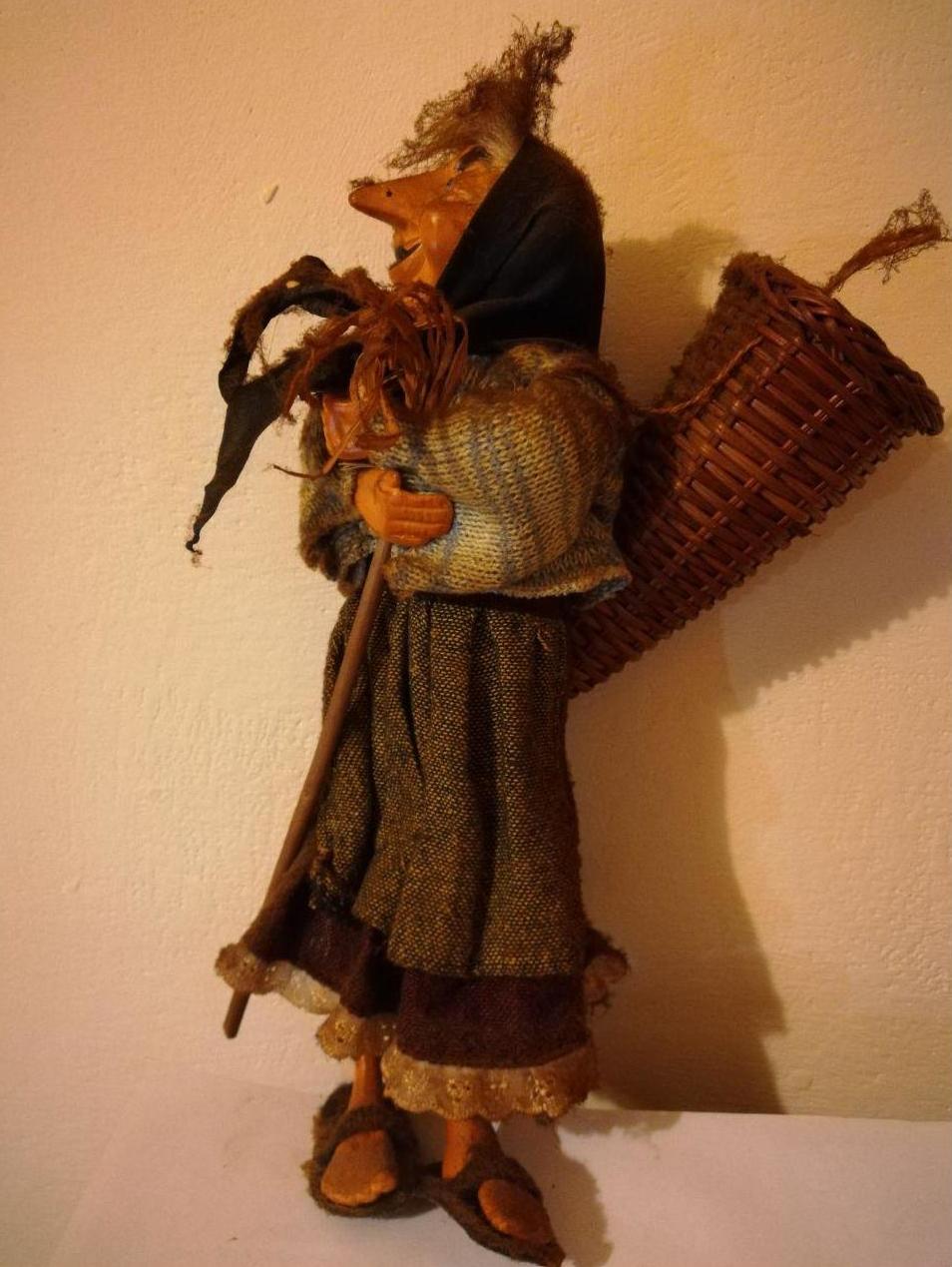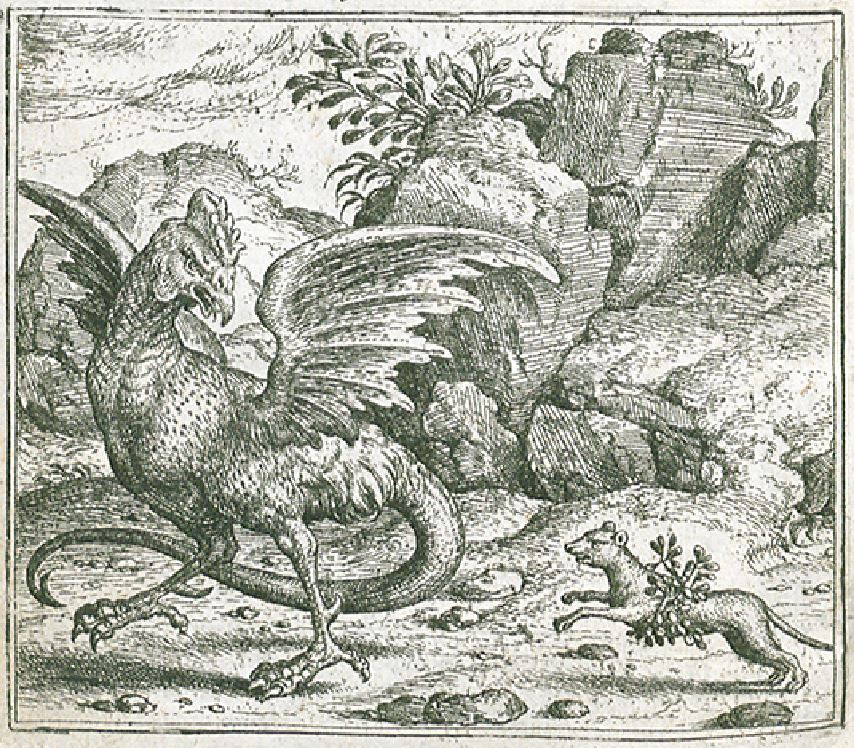|
Badalisc
__NOTOC__ The Badalisc (also Badalisk) is a mythical creature of the Val Camonica, Italy, in the southern central Alps. The Badalisc is represented today as a creature with a big head covered with a goat skin, two small horns, a huge mouth and glowing eyes. The celebration According to legend the Badalisc lives in the woods around the village of Andrista (commune of Cevo) and is supposed to annoy the community: each year it is captured during the period of Epiphany (5 & 6 January) and led on a rope into the village by musicians and masked characters, including ''il giovane'' (the young man), ''il vecchio'' (the old man), ''la vecchia'' (the old woman) and the young ''signorina'', who is "bait" for the animal's lust. There are also some old witches, who beat drums, and bearded shepherds, and a hunchback (''un torvo gobetto'') who has a "rustic duel" with the animal. Traditionally only men take part, although some are dressed as women. In medieval times women were prohibited fro ... [...More Info...] [...Related Items...] OR: [Wikipedia] [Google] [Baidu] |
Christmas In Italy
Christmas in Italy (, ) begins on 8 December, with the Feast of the Immaculate Conception, the day on which traditionally the Christmas tree is mounted and ends on 6 January, of the following year with the Epiphany (holiday), Epiphany ( ), and in some areas female puppets are burned on a pyre (called ''Bonfire, falò''), to symbolize, along with the end of the Christmas period, the death of the old year and the beginning of a new one. 26 December (Saint Stephen's Day, in Italian ''Giorno di Santo Stefano''), is also a Public holidays in Italy, public holiday in Italy. The Italian term derives from the Latin , which literally means 'birth', and the greetings in Italian are (Merry Christmas) and ''felice Natale'' (). The tradition of the nativity scene comes from Italy. One of the earliest representation in art of the nativity was found in the early Christian Roman catacomb of Catacombs of San Valentino, Saint Valentine. The first seasonal nativity scene, which seems to have be ... [...More Info...] [...Related Items...] OR: [Wikipedia] [Google] [Baidu] |
Alpine Folklore
The central and eastern Alps of Europe are rich in folklore traditions dating back to pre-Christian times, with surviving elements originating from Germanic, Gaulish (Gallo-Roman), Slavic ( Carantanian) and Raetian culture. Survival through the ages Ancient customs survived in the rural parts of Austria, Switzerland, Bavaria, Slovenia, western and northern Croatia and north eastern Italy in the form of dance, art, processions, rituals and games. The high regional diversity results from the mutual isolation of Alpine communities. In the Alps, the relationship between the Roman Catholic Church and paganism has been an ambivalent one. While some customs survived only in the remote valleys inaccessible to the church's influence, other customs were actively assimilated over the centuries. In light of the dwindling rural population of the Alps, many customs have evolved into more modern interpretations. Pastoral traditions Around September 8, the feast of the Nativity of Mary, ... [...More Info...] [...Related Items...] OR: [Wikipedia] [Google] [Baidu] |
Italian Folklore
Folklore of Italy refers to the folklore and urban legends of Italy. Within the Italian territory, various people have followed each other over time, each of which has left its mark on current culture. Some tales also come from Christianization, especially those concerning demons, which are sometimes recognized by Christian demonology. Italian folklore also includes the genre of the fairy tale (where the term itself was born), folk music, folk dance and folk heroes. Figures and Heroes of Italian folklore Below is a list of the folklore figures who have animated Italian folk tales since ancient Rome. Traditional characters * In Italian folklore, the Befana is an old woman who delivers gifts to children throughout Italy on Epiphany Eve (the night of January 5) in a similar way to Santa Claus or the Three Magi Kings. A popular belief is that her name derives from the Feast of Epiphany (). * ''Santa Lucia'' is a holy woman who delivers gifts to children of Bergamo and provi ... [...More Info...] [...Related Items...] OR: [Wikipedia] [Google] [Baidu] |
Maschera Del Badalisc - Andrista - Cevo (Foto Luca Giarelli)
Maschera (Italian: mask) may refer to: *Maschera (band), a Japanese band *Maschera, a genre of music introduced from Italy to Germany by William Brade *''La maschera'', a film by Fiorella Infascelli (1988) *Fiorenzo Maschera Florentio Maschera (c. 1541–1584) was an Italian composer and organist of Brescia Cathedral, known for his organ pieces.''The Musical Standard'' 1880 "All these peculiarities are presented by the first illustration, a “Canzon” by Florentin ... (1540-1584), Italian composer See also * '' Un ballo in maschera'', an 1859 opera by Giuseppe Verdi {{dab, surname ... [...More Info...] [...Related Items...] OR: [Wikipedia] [Google] [Baidu] |
Salami
Salami ( ; : ''salame'') is a ''salume'' consisting of fermented and air-dried meat, typically pork. Historically, salami was popular among Southern, Eastern, and Central European peasants because it can be stored at room temperature for up to 45 days once cut, supplementing a potentially meager or inconsistent supply of fresh meat. Countries and regions across Europe make their own traditional varieties of salami. Small-sized salami are also referred to as ''salametti'' or ''salamini''. Etymology The word ''salami'' in English comes from the plural form of the Italian (). It is a singular or plural word in English for cured meats of a European (particularly Italian) style. In Romanian, Bulgarian, and Turkish, the word is ''salam''; in Macedonian and Serbo-Croatian it is ''salama''; in Hungarian it is ''szalámi''; in Czech it is ''salám''; in Slovak it is ''saláma''; in Russian, Ukrainian, and Belarusian it is ''salyami''; and Polish, French, German, Greek, and Dutc ... [...More Info...] [...Related Items...] OR: [Wikipedia] [Google] [Baidu] |
Mythic Humanoids
Mythic humanoids are legendary, Folklore, folkloric, or mythological creatures that are part human, or that Anthropomorphism, resemble humans through appearance or character. Each culture has different mythical creatures that come from many different origins, and many of these creatures are humanoids. They are often able to talk and in many stories they guide the hero on their journey. Africa * Jengu – (West African) Beautiful, mermaid–like creatures. * Werehyena – Hyena, Hyaenidae Shapeshifting, therianthropic creature common in the folklore of North and East Africa, and West Asia. * Mami Wata – Mermaid–like water–dwelling humanoids from West African mythology * Ogbanje – (Igbo) spirit who is born into the same family repeatedly and dies young on purpose to drive them into grief. Americas * Adlet – Dog-like humanoids in Inuit religion, Inuit folklore. * Anung Ite – (Lakota) female spirit with two faces and spikes protruding from elbows. Variations from oth ... [...More Info...] [...Related Items...] OR: [Wikipedia] [Google] [Baidu] |
Christmas Characters
Christmas is an annual festival commemorating Nativity of Jesus, the birth of Jesus Christ, observed primarily on December 25 as a Religion, religious and Culture, cultural celebration among billions of people Observance of Christmas by country, around the world. A liturgical year, liturgical feast central to Christianity, Christmas preparation begins on the Advent Sunday, First Sunday of Advent and it is followed by Christmastide, which historically in the West lasts Twelve Days of Christmas, twelve days and culminates on Twelfth Night (holiday), Twelfth Night. Christmas Day is a public holiday in List of holidays by country, many countries, is observed religiously by a majority of Christians, as well as celebrated culturally by many non-Christians, and forms an integral part of the annual Christmas and holiday season, holiday season. The traditional Christmas narrative recounted in the New Testament, known as the Nativity of Jesus, says that Jesus was born in Bethlehem, in ... [...More Info...] [...Related Items...] OR: [Wikipedia] [Google] [Baidu] |
Italian Legendary Creatures
Italian(s) may refer to: * Anything of, from, or related to the people of Italy over the centuries ** Italians, a Romance ethnic group related to or simply a citizen of the Italian Republic or Italian Kingdom ** Italian language, a Romance language *** Regional Italian, regional variants of the Italian language ** Languages of Italy, languages and dialects spoken in Italy ** Italian culture, cultural features of Italy ** Italian cuisine, traditional foods ** Folklore of Italy, the folklore and urban legends of Italy ** Mythology of Italy, traditional religion and beliefs Other uses * Italian dressing, a vinaigrette-type salad dressing or marination * Italian or Italian-A, alternative names for the Ping-Pong virus, an extinct computer virus * ''Italien'' (magazine), pro-Fascist magazine in Germany between 1927 and 1944 See also * * * Italia (other) * Italic (other) * Italo (other) * The Italian (other) * Italian people (other) Italian ... [...More Info...] [...Related Items...] OR: [Wikipedia] [Google] [Baidu] |
Krampus
The Krampus () is a horned anthropomorphic figure who, in the Central and Eastern Alpine folkloric tradition, is said to accompany Saint Nicholas on visits to children during the night of 5 December (''Krampusnacht''; "Krampus Night"), immediately before the Feast of St. Nicholas on 6 December. In this tradition, Saint Nicholas rewards well-behaved children with small gifts, while Krampus punishes badly behaved ones with birch rods. The origin of the figure is unclear; some folklorists and anthropologists have postulated that it may have pre-Christian origins. In certain traditional parades and in such events as the ("Krampus run"), some young men dressed as Krampus attempt to scare the audience with their antics. Krampus is featured on holiday greeting cards called . The figure has been imported into popular culture around the world, and has appeared in movies, TV shows and games. Origins Discussing his observations in 1975 while in Irdning, a small town in Styri ... [...More Info...] [...Related Items...] OR: [Wikipedia] [Google] [Baidu] |
Perchta
or (' Bertha'; ), also commonly known as () and other variations, was once known as a goddess in Alpine paganism in the Upper German and also Austrian and Slovenian regions of the Alps. Her name may mean 'the bright one' or 'the bearer' (, from Proto-Germanic *''berhtaz'') and is probably related to the name , meaning 'the feast of the Epiphany'. Eugen Mogk provides an alternative etymology, attributing the origin of the name to the Old High German verb , meaning 'hidden' or 'covered'. The exact origin or time of origin is unknown. Perchta is often identified as stemming from the same Germanic goddess as Holda and other female figures of Germanic folklore (see Frija-Frigg). According to Jacob Grimm and Lotte Motz, Perchta is Holda's southern cousin or equivalent, as they both share the role of "guardian of the beasts" and appear during the Twelve Days of Christmas, when they oversee spinning.Motz according to Hilton 1984. Grimm says Perchta or Berchta was known "precis ... [...More Info...] [...Related Items...] OR: [Wikipedia] [Google] [Baidu] |
Basilisk
In European bestiary, bestiaries and legends, a basilisk ( or ) is a legendary reptile reputed to be a Serpent symbolism, serpent king, who causes death to those who look into its eyes. According to the ''Natural History (Pliny), Naturalis Historia'' of Pliny the Elder, the basilisk of Cyrene, Libya, Cyrene is a small snake, "being not more than twelve inches in length", that is so venomous, it leaves a wide trail of deadly venom in its path, and its gaze is likewise lethal. According to Pliny, the basilisk's weakness is the odor of a weasel. The weasel was thrown into the basilisk's hole, recognizable because some of the surrounding shrubs and grass had been scorched by its presence. It is possible that the legend of the basilisk and its association with the weasel in Europe was inspired by accounts of certain species of Asiatic and African snakes (such as Naja, cobras) and their natural predator, the mongoose. Etymology The word originates from the Greek form ''basilískos'' ( ... [...More Info...] [...Related Items...] OR: [Wikipedia] [Google] [Baidu] |







